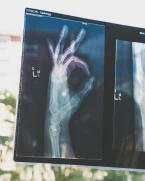The Blissful Sensation: Exploring the World of ASMR

The Relaxing Experience of Going to the Hairdresser and Eye Exams
Many of us have experienced the feeling of relaxation and calmness while going to the hairdresser or getting an eye exam. The speaker in the video shares their own experience of missing these activities, not for their appearance but for the deep relaxation they provided. The speaker found the gentle touch of the hairdresser and the sound of the scissors snipping close to their ears incredibly soothing. Similarly, the speaker enjoyed eye exams, not the puffs of air or bright lights, but the sound of the lens wheels clicking and the kind, soft voice of the optometrist.
Interestingly, the speaker is not alone in finding these experiences deeply relaxing. The sensation they describe is known as Autonomous Sensory Meridian Response (ASMR), a feeling of deep relaxation and calmness triggered by certain stimuli. People across the internet have reported experiencing the same sensation during positive personal attention from a kind and caring individual, such as a teacher, healthcare professional, or even a friend braiding their hair or drawing letters on their back.
ASMR has gained popularity in recent years, with individuals creating videos specifically for the purpose of relaxing their viewers and helping them fall asleep more easily. ASMR artists sit close to the camera and speak softly or even whisper gently. They may also pretend to be a hairdresser or a healthcare professional, giving their viewers the experience of personal attention and care.
Overall, the speaker’s experience highlights the importance of self-care and the simple yet powerful benefits of positive personal attention. Whether it’s going to the hairdresser or getting an eye exam, finding moments of deep relaxation and calmness can have a profound impact on our wellbeing.
The Blissful Sensation of Autonomous Sensory Meridian Response (ASMR)
Have you ever experienced a sensation of deep relaxation and pleasure triggered by certain sounds or experiences? If so, you may have experienced Autonomous Sensory Meridian Response (ASMR).
ASMR is a complex term for a simple and blissful sensation. It is characterized by a tingling sensation on the skin and scalp, often accompanied by a feeling of deep relaxation and calmness. ASMR can be triggered by a variety of stimuli, including soft whispers, gentle tapping, and personal attention from a kind and caring individual.
Although ASMR has gained popularity in recent years, the sensation has been experienced by individuals for many years. Before the term ASMR was coined, people described the sensation as a “head orgasm” or a “brain massage.” The common thread among these descriptions is the feeling of pleasure and relaxation triggered by certain stimuli.
ASMR has even been found to have health benefits, such as helping individuals fall asleep more easily and reducing stress levels. Brain scans have shown that the same regions of the brain are activated during ASMR and positive personal attention from a kind and caring individual in the real world.
In conclusion, ASMR is a simple yet powerful sensation that can have profound effects on our wellbeing. Whether it’s through watching ASMR videos or experiencing positive personal attention from a caring individual, finding moments of deep relaxation and pleasure can have a lasting impact on our mental and physical health.
ASMR and Positive Personal Attention
One of the key triggers for Autonomous Sensory Meridian Response (ASMR) is positive personal attention from kind and caring individuals. Whether it’s a hairdresser washing your hair, a teacher helping you solve a math problem, or a friend braiding your hair, these moments of personal attention can trigger a feeling of deep relaxation and pleasure.
ASMR videos often simulate these experiences, with ASMR artists sitting close to the camera and speaking softly or even whispering gently. They may also pretend to be a hairdresser or a healthcare professional, giving their viewers the experience of personal attention and care.
Interestingly, brain scans have shown that the same regions of the brain are activated during ASMR and positive personal attention from a kind and caring individual in the real world. This suggests that the pleasure and relaxation experienced during ASMR is not simply a result of the sounds or stimuli themselves, but also the personal attention and care that they simulate.
In conclusion, ASMR is not just about the sounds or stimuli that trigger the sensation, but also the personal attention and care that they simulate. Whether it’s through real-world experiences or ASMR videos, finding moments of positive personal attention can have a profound impact on our wellbeing and trigger the blissful sensation of ASMR.
ASMR Artists and Relaxation Videos
ASMR artists are individuals who create videos with the sole purpose of helping their viewers relax and fall asleep more easily. These artists sit close to the camera, speak softly or even whisper gently, and simulate experiences of personal attention and care.
The popularity of ASMR videos has skyrocketed in recent years, with some ASMR artists having millions of followers on their YouTube channels. These videos often feature simple activities such as hair brushing, makeup application, or page-turning, all accompanied by the soothing sounds and gentle whispers that trigger the sensation of ASMR.
Although ASMR videos are not a substitute for real-world personal attention and care, they can be a helpful tool for those who struggle with stress, anxiety, and insomnia. In fact, individuals who are diagnosed with anxiety and insomnia have reported experiencing benefits from watching ASMR videos and experiencing the sensation of ASMR.
In conclusion, ASMR artists and their relaxation videos offer a unique and powerful way to experience the sensation of ASMR and find moments of deep relaxation and pleasure. Whether it’s through real-world experiences or ASMR videos, finding ways to trigger the sensation of ASMR can have a profound impact on our mental and physical health.
The Science behind ASMR
Recent brain scan studies have shown that the same regions of the brain are activated during ASMR as when individuals receive positive personal attention from kind and caring individuals in the real world. This suggests that ASMR is not just a pleasurable sensation but may have real physiological benefits.
Furthermore, ASMR seems to activate the release of the neural hormone oxytocin, also known as the “love hormone,” which is associated with feelings of relaxation, calmness, and comfort. This may explain why ASMR videos are so effective at reducing stress and anxiety, and even helping individuals fall asleep more easily.
While there is still much to be learned about the science behind ASMR, it’s clear that the sensation is more than just a passing trend. ASMR has the potential to be a powerful tool for promoting relaxation and well-being, and the scientific community is only just beginning to scratch the surface of what it can offer.
ASMR and Its Global Reach
ASMR is not limited to a specific region or culture. People from over 130 different countries have reported experiencing the sensation, and they all describe the same feeling of deep relaxation, comfort, and pleasant brain tingles.
ASMR is also an effective tool for reducing stress and anxiety and helping individuals fall asleep more easily. Even individuals who struggle with anxiety and insomnia report feeling significant benefits from watching ASMR videos.
This global reach and the positive effects that ASMR has on individuals make it a promising area of research for health professionals seeking new ways to help their patients manage stress and improve their sleep quality.
Oxytocin and the Health Benefits of ASMR
One likely candidate for the brain chemical responsible for the health benefits of ASMR is the neural hormone oxytocin. Often referred to as the “love hormone,” oxytocin is known to increase in the brain when individuals receive positive personal attention in a kind and caring way.
When oxytocin levels increase, individuals report feeling relaxed, calmed, and comforted. These feelings are similar to the ones experienced during an ASMR session.
Research studies have shown that ASMR can significantly reduce heart rate, indicating a potential role for oxytocin in regulating the body’s stress response.
While there are still many unanswered questions about ASMR and its health benefits, the potential link between oxytocin and the sensation’s effects is a promising area of research for healthcare professionals seeking new tools to help their patients manage stress and anxiety.
Unanswered Questions About ASMR
Despite the growing popularity of ASMR videos and the scientific studies that have been conducted, there are still many unanswered questions. One of the biggest questions is why not everyone experiences ASMR. It could be that some people just haven’t had the right real-world encounter or that it’s determined by genetics.
Another question is how the health benefits of ASMR compare to other therapeutic practices such as yoga, mindfulness, and meditation. While ASMR has been shown to reduce stress and aid in sleep, more research is needed to fully understand its potential benefits.
Overall, ASMR is a fascinating and relatively new area of research that has captured the attention of millions of people around the world. As more studies are conducted and more people share their experiences, we may gain a better understanding of the phenomenon and its potential applications in promoting relaxation and well-being.
Conclusion
ASMR is a sensation that has been experienced by people all over the world for many years, but it was only recently given a name. Autonomous Sensory Meridian Response is a complex term for a simple and blissful sensation. It is a deeply relaxing feeling that is triggered by positive personal attention from kind and caring individuals. People experience ASMR in a variety of ways, such as going to the hairdresser, getting an eye exam, or watching videos created by ASMR artists.
Brain scans show that the same regions of the brain are activated during ASMR and positive personal attention. It is believed that the hormone oxytocin may be responsible for the health benefits of ASMR, including stress reduction and better sleep. However, there are still many unanswered questions about this phenomenon, such as why not everyone experiences it and how it compares to other therapeutic practices.
Despite the unanswered questions, ASMR has helped many people around the world reduce their stress and fall asleep more easily. ASMR artists have millions of followers on social media and have created a new genre of relaxation videos to help people experience ASMR from the comfort of their own homes.
In conclusion, ASMR is a fascinating and beneficial phenomenon that has captured the attention of people around the world. As research continues to reveal more about the science behind it, ASMR may become a widely accepted tool for managing stress and improving sleep.












